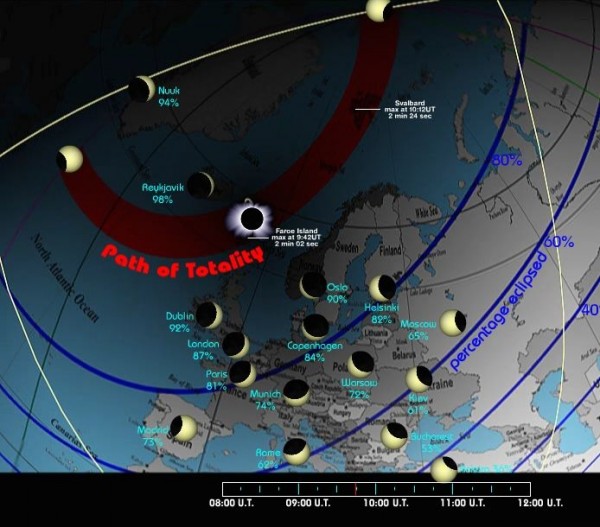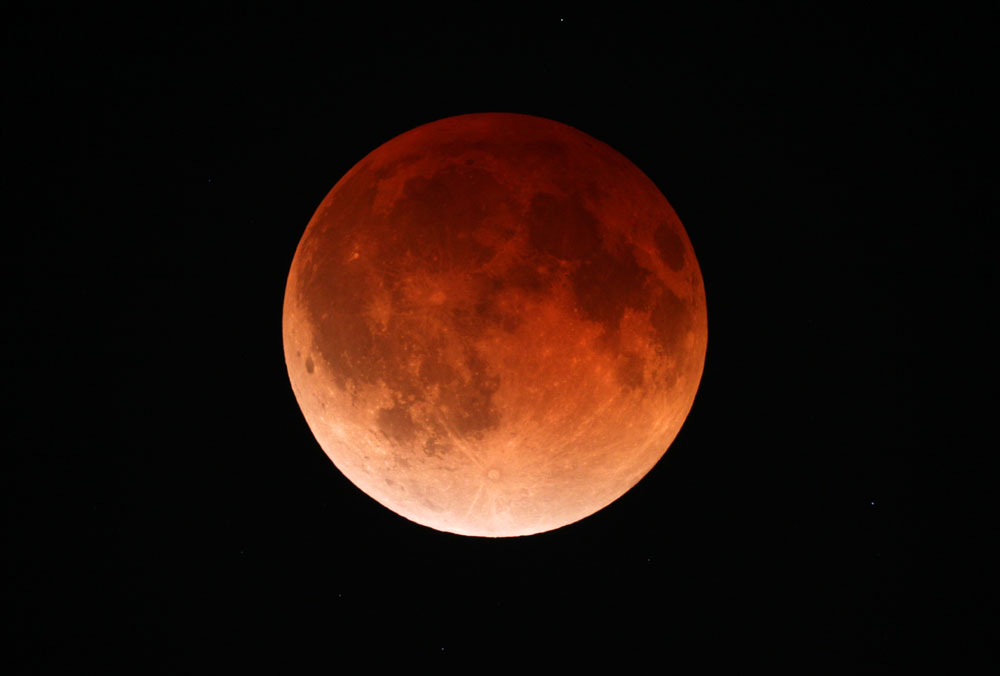18 March 2015
| Last updated on 28 September 2015
The Earth's Sky
Our universe has amazing ways of showing what it can do, and on the rare occasion we tiny humans are very lucky to be able to see with our own eyes an event.
Keep up to date with these universally amazing things here; everything from eclipses, to supermoons to asteroid showers... We'll try our best to make sure you know of the biggest and the best ones!

Supermoon Lunar Eclipse
Don't worry - we've found a recorded stream of the whole thing that you can watch!
When: September 28th, 2015 at 2.11am Greenwich Mean Time (GMT)
Where: Americas, Europe, Africa, West Asia and the East Pacific
We're set for a dramatic show in the sky this September, as for thh first time in more than 30 years, we'll be able to witness a supermoon in combination with a lunar eclipse... Something that hasn't occurred since 1982, and won't occur again until 2033!
The supermoon eclipse will take place at 2.11am GMT on Monday, and is expected to last for one hour and 11 minutes.
Expats in the Americas, Europe, Africa, West Asia and the East Pacific will be able to witness the event, a result of the sun, earth and extra-bright moon lining up. It will be bigger and brigher than usual!

Image: The Telegraph
"Supermoon" is the nickname given to full moons that happen when our celestial neighbour is relatively close to earth, and a total lunar eclipse occurs when a full moon passes through the darkest part of the earth's shadow, which is also known as the umbra.
Want to watch the show? NASA is offering a live feed.
Supermoon Total Eclipse of Equinox Sun
Where: North Atlantic Ocean, Greenland, Iceland, Europe, northern Africa, the Middle East, northwestern Asia
Boy, isn't that a moutful? It seems we're in for a treat on March 20th, 2015 as the moon will be at its closest point to Earth in its orbit. Thus, it'll be a supermoon - unfortunatly, it won't be visible but it will effect our oceans. This supermoon will swing right in front of the equinoux sun, causing a total eclipse in few areas of the world. Effectively, there will be three rare celestial events all occurring at once - so if you're in a country that may get a view, don't miss it!
If you're an expat who resides in or near a country at the highest northern latitudes, such as Greenland and Iceland, you're in luck. You'll be able to see the eclipse in its "path of totality", meaning it will be a total eclipse. It'll be a big show - but with a small audience, we're afraid! So the best spots to get a glimpse of it from land are the Faroe Islands and the Svalbard archieplago.
Never fear if you don't live near here though - you may have a chance of catching sight of a varying partial solar eclipse if you live in any country in Europe, northern Africa, northwestern Asia, and some parts of the Middle East. See the map below:

If you're an expatriate in any of the below countries, don't forget to put an alarm on your phone or clocks to make sure you don't miss this beautiul event!
Tórshavn, Faroe Islands
- Partial solar eclipse begins: 8:39 a.m. Western European Time (WET)
- Total solar eclipse begins: 9:41 a.m. WET
- Maximum eclipse: 9:42 a.m. WET
- Total solar eclipse ends: 9:43 a.m. WET
- Partial solar eclipse ends: 10:48 a.m. WET
- Partial solar eclipse begins: 10:12 a.m. Central European Time (CET)
- Total solar eclipse begins: 11:11 a.m. CET
- Maximum eclipse: 11:12 a.m. CET
- Total solar eclipse ends: 11:13 a.m. CET
- Partial solar eclipse ends: 12:12 a.m. CET
- Solar eclipse begins: 8:38 a.m. Greenwich Mean Time (GMT)
- Greatest eclipse: 9:37 a.m. GMT
- Solar eclipse ends: 10:39 a.m. GMT
London, England
- Solar eclipse begins: 8:25 a.m. Greenwich Mean Time (GMT)
- Greatest eclipse: 9:31 a.m. GMT
- Solar eclipse ends: 10:41 a.m. GMT
- Maximum obscuration of solar disk: 84%
Algiers, Algeria
- Solar eclipse begins: 9:06 a.m. Central European Time (CET)
- Greatest eclipse: 10:11 a.m. CET
- Solar eclipse ends: 11:20 a.m. CET
- Maximum obscuration of solar disk: 53%
Istanbul, Turkey
- Solar eclipse begins: 10:53 p.m. Eastern European Time (EET)
- Greatest eclipse: 11:57 a.m. EET
- Solar eclipse ends: 1:02 p.m. EET
- Maximum obscuration of solar disk: 32%
Moscow, Russia
- Solar eclipse begins: 12:13 p.m. Moscow Standard Time (MST)
- Greatest eclipse: 1:20 p.m. MST
- Solar eclipse ends: 2:27 p.m. MST
- Maximum obscuration of solar disk: 58%
Remember! You should always use proper eye protection if you want to observe a solar eclipse! You can do this by either using a projection method to watch partial phases of it, or buy purchasing special eclipse glasses.
Total Lunar Eclipse a.k.a. Blood Moon
When: April 4th, 2015 at 9.03am Coordinated Universal Time (UTC)
Where: Asia, Australia, North America, South America, Pacific, Atlantic, Indian Ocean, Arctic, Antarctica
This April 4th eclipse is the third in a tetrad - a series of four consecutive total lunar eclipses in 2014/2015. The term 'Blood Moon', has recently become popular when referring to these events.

Timing(s):
- Penumbral Eclipse begins: 9.03am UTC
- Partial Eclipse begins: 10.17am UTC
- Maximum Eclipse: 12pm UTC
- Partial Eclipse ends: 1.44pm UTC
- Penumbral Eclipse ends: 2.58pm UTC
For you expats in the Middle East, you may catch a glimpse of the penumbral eclipse ending around 7pm Gulf Time Zone (UTC +4). So keep an eye out!
Supermoons in 2015
There's set to be three supermoons that will occur this year, in which our good old regular moon will appear a lot larger in size! They're a great sight to see, as anyone across the globe can spot a supermoon. Get your diaries ready to jot these dates down...
- 1 of 3: August 29th, 2015, the moon will reach full size at 6.38pm UTC
- 2 of 3: September 28th, 2015, the moon will reach full size at 2:52am UTC. This one will be the closest Full Moon of the year!
- 3 of 3: October 27th, 2015, the moon will reach rull at 12.06pm UTC


































